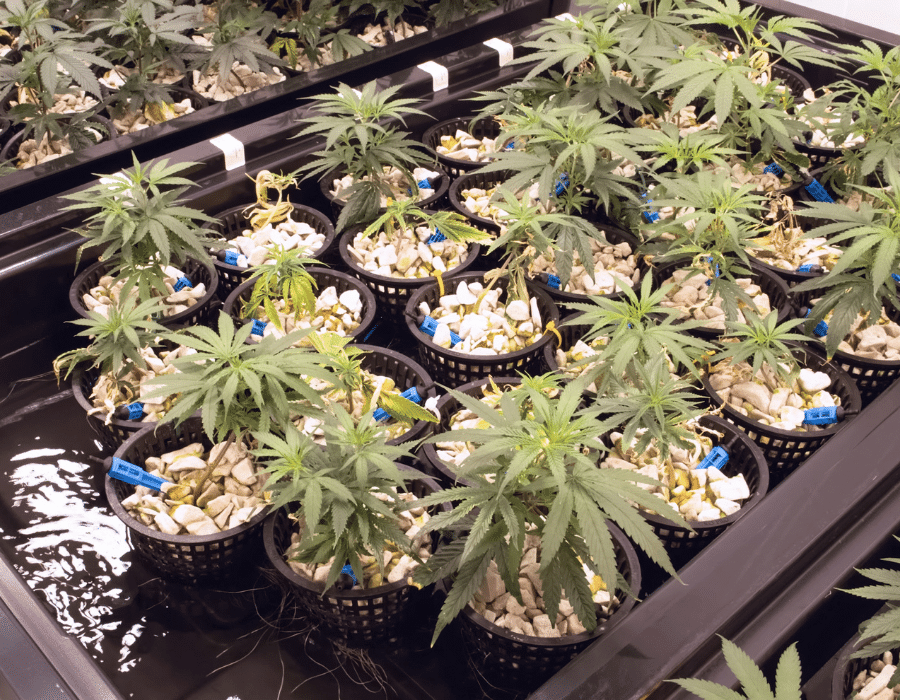Hydroponic gardening is one of the most fun and exciting ways to grow cannabis, whether you’re working with a deep water culture (DWC) setup, applying the nutrient film technique (NFT), or simply growing in soilless growing media like perlite or coco coir.
Hydro setups boast several advantages, such as using less water and can be easily adjusted to include automation of many basic functions. Whether you’re just starting out or a seasoned veteran of growing cannabis, hydroponics is a sure way to grow some beautiful marijuana plants for yourself.
Of course, there are many challenges and questions that face hydroponics growers: what type of system would be best suited for my needs? How should I maintain my growing space? These questions and more are necessary for hydro growers to take into account, an issue which at first can seem overwhelming. With a bit of research and practice, though, you can achieve higher yields, increase potency and grow beautiful, fruitful cannabis plants. Hydroponic glory is within reach of anyone!
The Most Common Issues
Though the issues which cause you problems in your grow room are uniquely your own and based upon many variables, the fact remains that many growers have experienced similar problems in their own crop production. For this reason, we’ve narrowed down the issues facing hydroponics growers to a few of the most prominent, which will be discussed below.
Picking the Right System
One of the biggest problems growers face when deciding to enter the world of hydroponics is determining just which hydroponic method will work best for their particular needs. There are a wide range of issues to consider when making this decision, such as the space in which one will be growing, the type of light being used for plants, and the availability of a freshwater source. And these are only a few! Let’s examine a few types of hydro growing systems and their most salient applications.
Deep Water Culture (DWC) – One of the most popular and impressive hydroponics systems is the deep water culture setup. DWC systems utilize a nutrient solution basin, usually a bucket or plastic tote, situated beneath the plants and acting as a source for water and nutrients. Plants are suspended from net pots located in the vessel’s lid and secured in a soilless medium such as Rockwool or expanded clay pebbles. The plant’s root system is allowed to dangle into the hydroponic nutrient solution. Air is pumped into the nutrient solution from an air pump connected to an air stone, providing aeration to the nutrient solution and the plant’s roots. Some variations include aeroponics, which incorporates misting emitters to keep roots wet, and aquaponics, which incorporates elements for raising aquatic animals along with the propagation of plants.
Ebb and Flow (Flood and Drain) – Ebb and flow systems operate by pumping water into a basin (often a hydroponics tray), which houses plants and then allowing the water to recede back into the reservoir. In other words, these are bottom-feed systems, filling the space around the plant’s container (and thus roots) with a nutrient solution that can be absorbed by the plant’s roots and the growing medium. Though quite productive, these systems require more space than a DWC setup, as there must be room for the hydro tray and the separate reservoir, making them less-than-ideal for small scale home growers.
Nutrient Film Technique (NFT) – The NFT technique is most often used in the production of hydroponically-grown crops such as lettuce or other leafy greens. Net pots hold plants and allow their roots to dangle into a large pipe that has been outfitted with holes to house the net pots. Nutrient solution is then pumped to one side of the pipe, which is banked to allow the solution to run out the other side. These setups work well for outdoor or greenhouse horticulturalists as they tend to be large and cumbersome.
